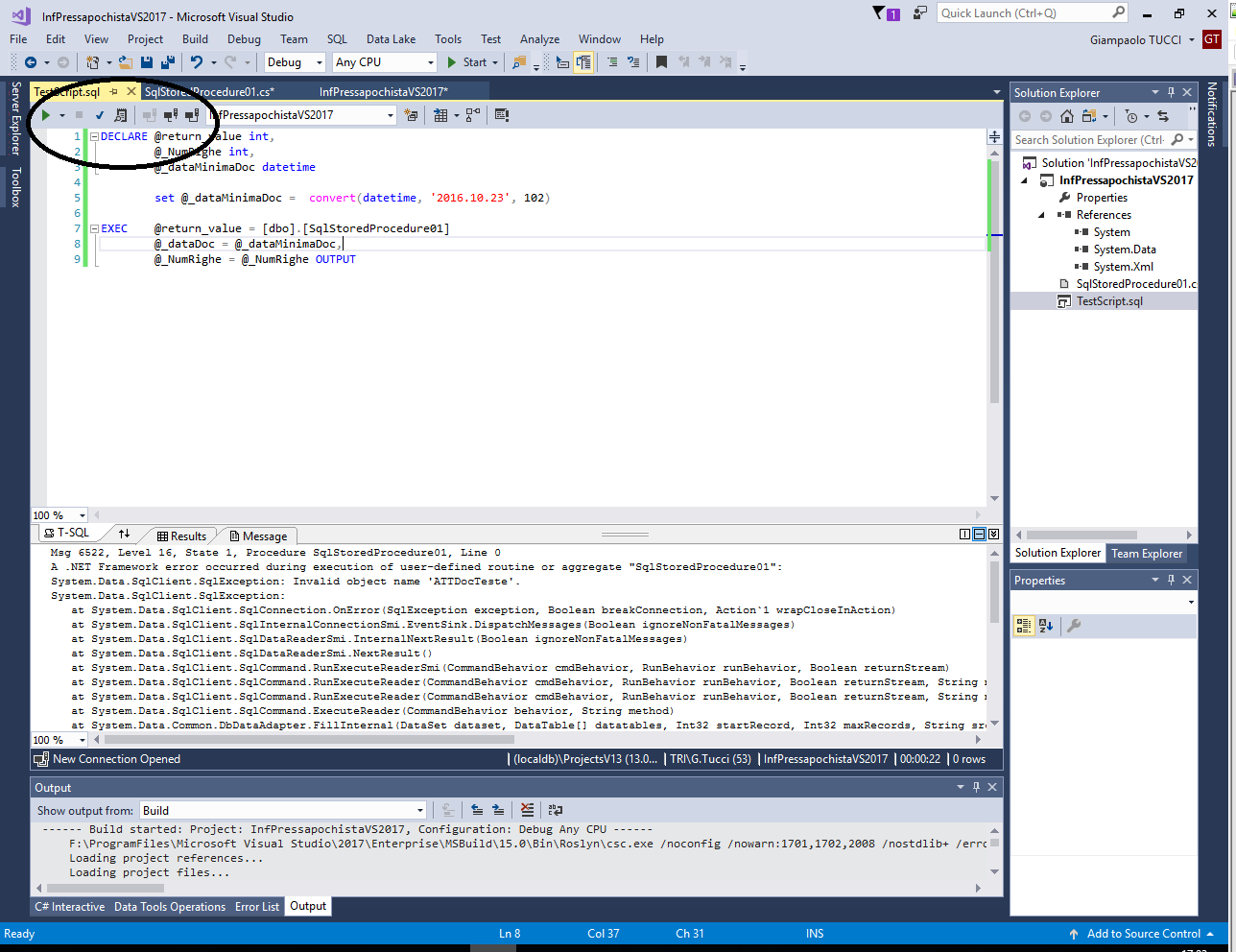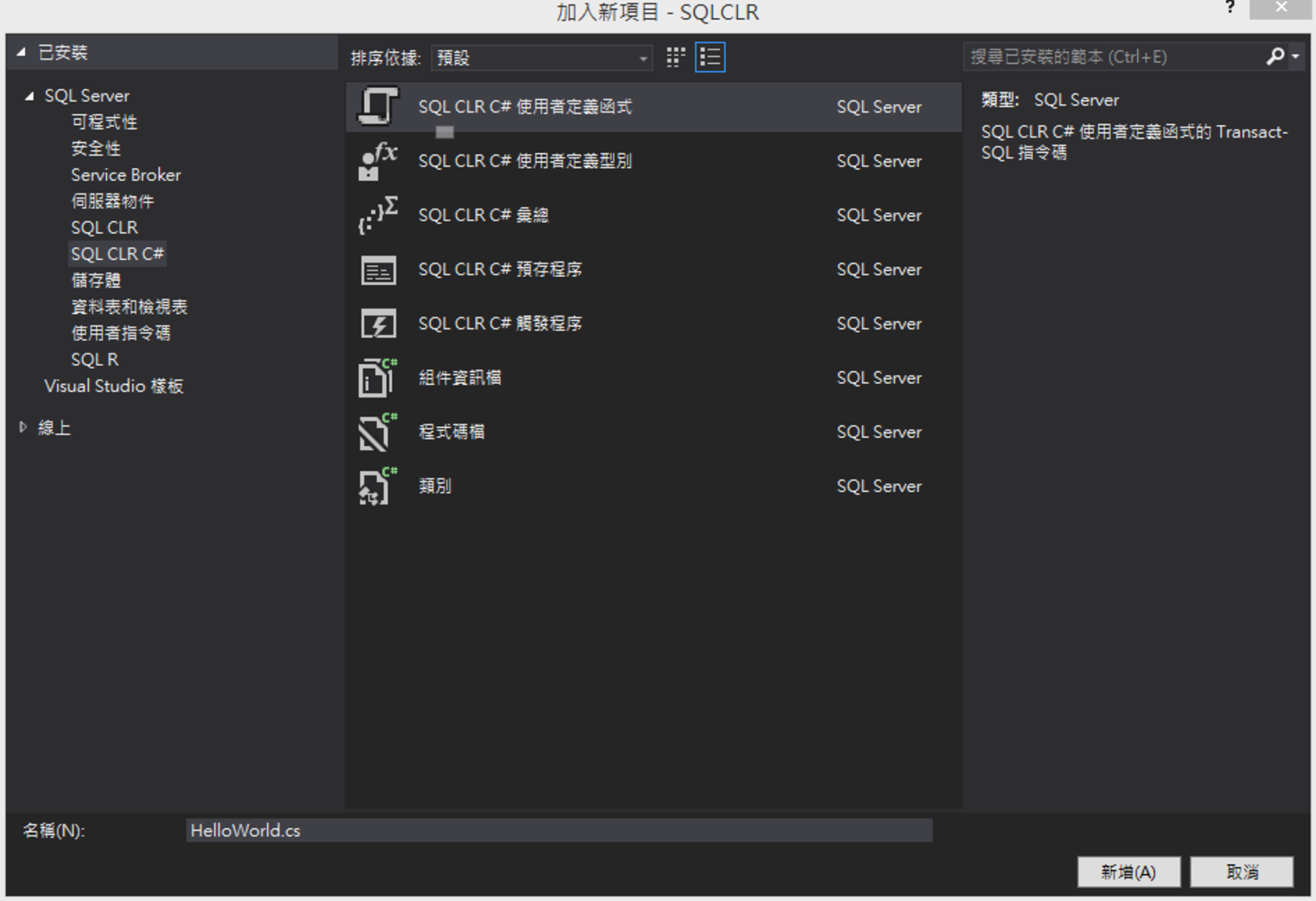

You should also note that once you have started debugging, it is too late to change settings in SQL Server Object Explorer. For this reason, you should not debug applications for CLR database objects on a production server.

When you are debugging CLR database objects, breaking execution will break all threads on the server, affecting other users. Do you wish to enable SQL CLR debugging on this server?". A message box appears with the warning: "Note that during debugging, all managed threads on this server will stop. Right-click the server containing the CLR database artifacts you want to debug, and choose Allow SQL/CLR Debugging.

To enable debugging of CLR database objects, open SQL Server Object Explorer. These property pages can be accessed by right-clicking your project in Solution Explorer and select Properties. The CLR Build property page contains all the compiler options that you can set to configure the compilation of CLR code in the project. It also has the "Generate DDL" setting to control whether DDL for the CLR database objects added to the project is generated. Specifically, the CLR property page has a permission level setting to set permissions on the CLR assembly. The CLR and CLR Build property pages contain many settings for using CLR database objects in your project. After you publish these CLR objects, they can be called and executed like any other database objects. When you build and publish the database project, you automatically publish the CLR objects in the project at the same time. Unlike in previous versions of Visual Studio, you do not need to create a separate CLR project and then add a reference to it from the database project. To create a CLR database object using SQL Server Data Tools, you create a database project and then add a CLR database object to it. For an explanation of the advantages of using CLR database objects hosted in SQL Server, as well as how to choose between Transact-SQL and CLR, see Advantages of CLR Integration and Advantages of Using Managed Code to Create Database Objects. Database objects that are written in managed code are called SQL Server Common Language Run (CLR) database objects. NET Framework languages to create database objects that retrieve and update data. In addition to the Transact-SQL programming language, you can use.


 0 kommentar(er)
0 kommentar(er)
